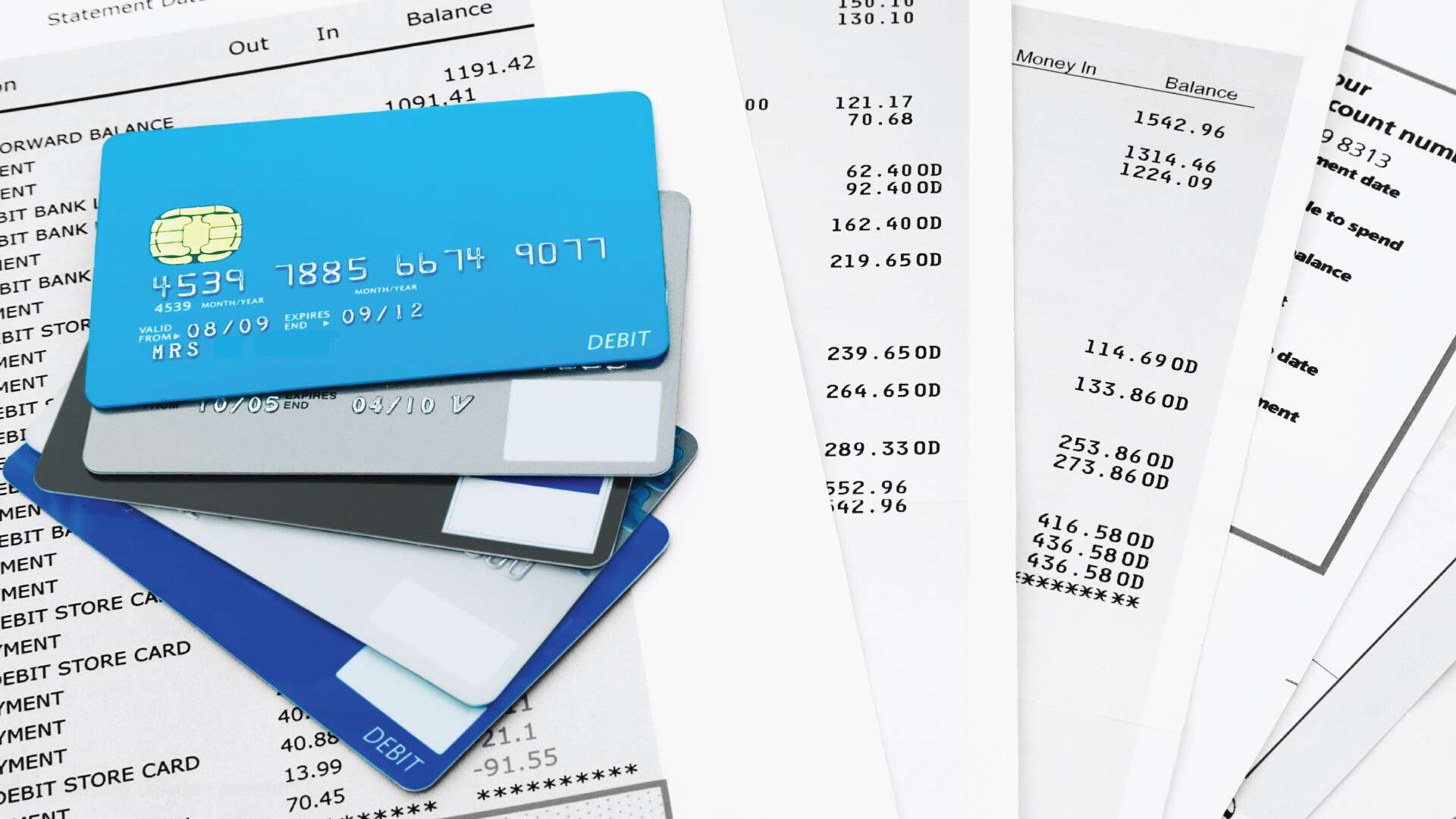Home>Finance>What Percent Of Customers Use A Rewards Program?


Finance
What Percent Of Customers Use A Rewards Program?
Published: February 29, 2024
Discover the importance of rewards programs in finance and learn what percentage of customers utilize them. Find out how rewards programs impact consumer behavior and financial decisions.
(Many of the links in this article redirect to a specific reviewed product. Your purchase of these products through affiliate links helps to generate commission for LiveWell, at no extra cost. Learn more)
Table of Contents
The Benefits of Rewards Programs
Rewards programs are a ubiquitous feature of the modern consumer landscape, offering a plethora of incentives to entice customers to engage with a brand or business. These programs, also known as loyalty programs, are designed to foster long-term relationships with customers by rewarding them for their repeat business and brand loyalty. The concept is simple yet powerful: customers earn points or rewards for every purchase or interaction, which can then be redeemed for discounts, free products, or other perks.
One of the primary benefits of rewards programs is their ability to incentivize customer engagement and repeat business. By offering tangible rewards for continued patronage, businesses can effectively cultivate a loyal customer base and encourage ongoing interactions. This, in turn, can lead to increased customer retention, higher lifetime value, and a more predictable revenue stream.
Furthermore, rewards programs can serve as a valuable differentiator in competitive markets, providing a compelling reason for customers to choose one brand over another. In an era where consumers are inundated with choices, the promise of exclusive rewards and personalized incentives can significantly influence purchase decisions and foster a sense of brand allegiance.
From a strategic standpoint, rewards programs also yield valuable data and insights into customer behavior and preferences. By tracking and analyzing the redemption patterns and point accrual of participants, businesses can gain a deeper understanding of their customer base and tailor their marketing efforts accordingly. This data-driven approach can lead to more targeted promotions, improved personalization, and ultimately, a more satisfying customer experience.
The Benefits of Rewards Programs
Rewards programs, also known as loyalty programs, are a prevalent feature of the contemporary business landscape, offering a wide array of incentives to attract and retain customers. These programs are designed to foster enduring relationships with customers by rewarding them for their repeat business and brand loyalty. The concept is straightforward yet compelling: customers earn points or rewards for each purchase or interaction, which can then be redeemed for discounts, complimentary products, or other perks.
One of the primary advantages of rewards programs is their capacity to incentivize customer engagement and repeat business. By providing tangible rewards for continued patronage, businesses can effectively cultivate a loyal customer base and encourage ongoing interactions. This, in turn, can lead to increased customer retention, higher lifetime value, and a more predictable revenue stream.
Moreover, rewards programs can serve as a valuable differentiator in competitive markets, offering a compelling reason for customers to choose one brand over another. In an era where consumers are inundated with choices, the promise of exclusive rewards and personalized incentives can significantly influence purchase decisions and foster a sense of brand allegiance.
From a strategic standpoint, rewards programs also yield valuable data and insights into customer behavior and preferences. By tracking and analyzing the redemption patterns and point accrual of participants, businesses can gain a deeper understanding of their customer base and tailor their marketing efforts accordingly. This data-driven approach can lead to more targeted promotions, improved personalization, and ultimately, a more satisfying customer experience.
The Popularity of Rewards Programs
Rewards programs have garnered widespread popularity among consumers and businesses alike, emerging as a cornerstone of customer engagement and brand loyalty strategies. The allure of earning rewards and reaping exclusive benefits has resonated with consumers across various industries, contributing to the pervasive presence of these programs in the marketplace.
One of the key factors driving the popularity of rewards programs is the inherent value they offer to consumers. By participating in these programs, customers can enjoy a sense of gratification and tangible benefits, such as discounts, freebies, or access to exclusive events. This value proposition not only incentivizes initial enrollment but also encourages ongoing engagement, as customers strive to accumulate rewards and maximize their benefits.
Furthermore, the widespread adoption of digital and mobile technologies has significantly bolstered the appeal and accessibility of rewards programs. With the advent of user-friendly mobile apps and digital platforms, customers can conveniently track their rewards, receive personalized offers, and seamlessly redeem their benefits. This enhanced convenience and flexibility have contributed to the growing appeal of rewards programs, particularly among tech-savvy consumers who prioritize seamless digital experiences.
Additionally, the competitive nature of the modern business landscape has fueled the proliferation of rewards programs as a means of differentiation and customer retention. Businesses across sectors recognize the impact of these programs in fostering long-term customer relationships and standing out amidst fierce competition. As a result, the prevalence of rewards programs has surged, with businesses leveraging them as a strategic tool to attract and retain customers in an increasingly crowded marketplace.
Moreover, the evolving consumer mindset, characterized by a desire for personalized experiences and tangible value, has further propelled the popularity of rewards programs. Consumers today seek more than just products or services—they seek meaningful interactions and personalized incentives from the brands they support. Rewards programs cater to this demand by offering tailored rewards, personalized offers, and exclusive experiences, thereby resonating with the evolving expectations of modern consumers.
In essence, the widespread popularity of rewards programs can be attributed to their ability to deliver tangible value, harness digital convenience, differentiate businesses, and align with evolving consumer preferences. As these programs continue to evolve and innovate, their appeal is expected to endure, further solidifying their status as a fundamental component of customer engagement and loyalty strategies.
Factors Influencing Rewards Program Usage
The utilization of rewards programs by consumers is influenced by a myriad of factors that collectively shape their engagement and participation. Understanding these influential factors is crucial for businesses seeking to optimize the effectiveness of their rewards programs and drive sustained customer involvement.
One of the primary factors impacting rewards program usage is the perceived value of the rewards offered. Customers are more likely to actively engage with a rewards program if they perceive the rewards as desirable, attainable, and reflective of their preferences. Tangible benefits such as discounts, free products, or exclusive access to events can significantly enhance the appeal of a rewards program and motivate ongoing participation.
Moreover, the ease of participation and redemption plays a pivotal role in influencing rewards program usage. Customers are more inclined to engage with programs that offer seamless enrollment processes, straightforward earning mechanisms, and convenient redemption options. A user-friendly interface, intuitive navigation, and clear instructions for redeeming rewards can contribute to higher levels of program utilization.
The transparency and clarity of program terms and conditions also impact customer engagement. When the rules governing point accrual, expiration, and redemption are transparent and easily understandable, customers are more likely to trust the program and feel confident in their ability to maximize its benefits. Conversely, complex or ambiguous terms may deter participation and erode trust in the program.
Additionally, the personalization of rewards and offers can significantly influence program usage. Customers are more likely to engage with a rewards program if they receive personalized offers and rewards tailored to their preferences and past purchasing behaviors. Personalization enhances the relevance and perceived value of the rewards, thereby fostering greater participation and ongoing engagement.
The communication and promotion of the rewards program also play a vital role in influencing customer usage. Clear and compelling communication about the program, its benefits, and ongoing promotions can generate awareness and generate interest among customers. Effective promotion through various channels, including email, social media, and in-store signage, can drive enrollment and sustained participation.
Furthermore, the overall customer experience, including the ease of earning and redeeming rewards, the level of customer service, and the perceived fairness of the program, can significantly impact program usage. A seamless and rewarding customer experience fosters positive perceptions of the program, encouraging continued engagement and advocacy among participants.
By understanding and addressing these influential factors, businesses can optimize their rewards programs to resonate with customer preferences, drive sustained usage, and ultimately cultivate enduring customer loyalty.
Strategies to Increase Rewards Program Participation
Boosting participation in rewards programs requires a strategic approach aimed at capturing the interest and engagement of customers. By implementing targeted strategies, businesses can enhance the appeal of their rewards programs and drive increased participation among their customer base.
One effective strategy involves clearly communicating the value proposition of the rewards program to customers. This entails highlighting the tangible benefits, such as discounts, free products, or exclusive perks, and emphasizing the ease of earning and redeeming rewards. By articulating the value and convenience of participation, businesses can pique the interest of customers and motivate them to enroll and actively engage with the program.
Personalization is another key strategy for increasing rewards program participation. Tailoring offers and rewards to align with the preferences and past purchasing behaviors of individual customers can significantly enhance the relevance and appeal of the program. By leveraging customer data and insights, businesses can deliver personalized incentives that resonate with customers, thereby driving higher levels of participation and ongoing engagement.
Furthermore, simplifying the enrollment and participation process can remove barriers to entry and encourage greater program involvement. Streamlining the registration process, offering clear instructions for earning and redeeming rewards, and providing a user-friendly interface can enhance the accessibility and appeal of the program, ultimately fostering increased participation.
Creating a sense of exclusivity and urgency through limited-time offers and exclusive rewards can also spur participation in rewards programs. By introducing time-sensitive promotions or exclusive perks available only to program participants, businesses can instill a sense of excitement and compel customers to enroll and actively engage with the program to access these coveted benefits.
Effective promotion and visibility are essential for driving program participation. Businesses can leverage various marketing channels, including email, social media, and in-store signage, to effectively promote the rewards program and generate awareness among customers. Clear and compelling messaging about the program’s benefits and ongoing promotions can capture the attention of customers and motivate them to enroll and participate.
Moreover, incentivizing referrals can be a powerful strategy for expanding program participation. By rewarding existing participants for referring friends and family to the program, businesses can leverage word-of-mouth marketing and expand their program’s reach, driving increased enrollment and participation through the power of personal recommendations.
By implementing these targeted strategies, businesses can elevate the appeal of their rewards programs, drive increased participation, and foster enduring customer loyalty.
Conclusion
Rewards programs stand as a cornerstone of customer engagement and loyalty strategies, offering a multitude of benefits for both businesses and consumers. The widespread popularity of rewards programs is a testament to their capacity to incentivize customer engagement, foster enduring relationships, and differentiate brands in competitive markets. As the business landscape continues to evolve, it is imperative for businesses to recognize the influential factors shaping rewards program usage and implement effective strategies to increase participation.
By understanding the factors that influence rewards program usage, businesses can tailor their programs to align with customer preferences, drive sustained engagement, and ultimately cultivate lasting loyalty. The perceived value of rewards, ease of participation, transparency of program terms, personalization, communication, and overall customer experience all play pivotal roles in shaping program utilization. Businesses that prioritize these factors and optimize their rewards programs accordingly can position themselves for sustained success and customer advocacy.
Furthermore, implementing targeted strategies to increase rewards program participation is essential for maximizing the impact and reach of these programs. Clear communication of the program’s value proposition, personalization of offers, simplification of the participation process, creation of exclusivity, effective promotion, and incentivizing referrals are all powerful strategies for driving increased program engagement and enrollment.
As businesses continue to innovate and adapt to evolving consumer preferences, rewards programs will remain a vital tool for cultivating customer loyalty and maximizing customer lifetime value. By leveraging the inherent appeal of rewards programs and implementing strategic initiatives to enhance their effectiveness, businesses can foster enduring customer relationships, differentiate their brands, and drive sustained success in an increasingly competitive marketplace.














